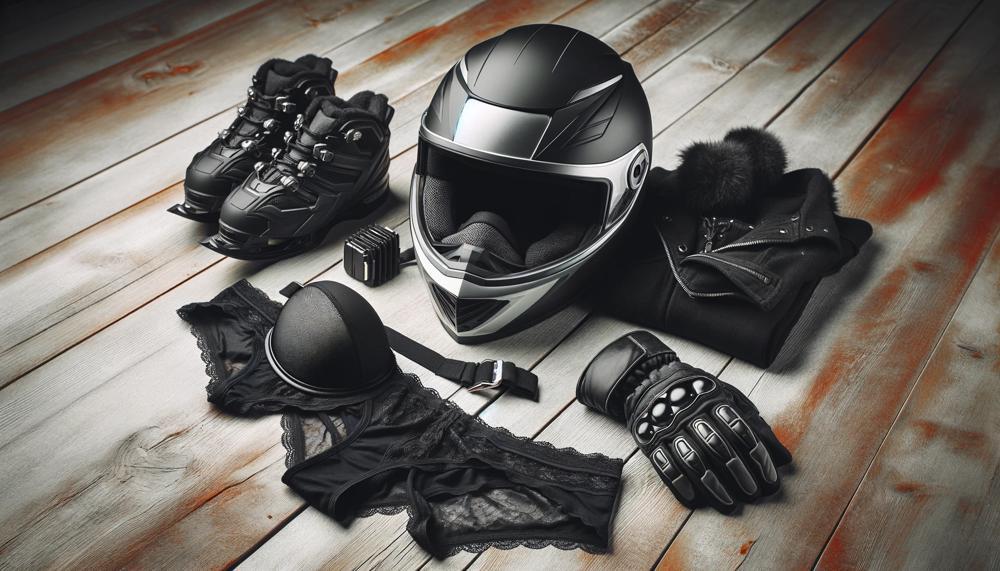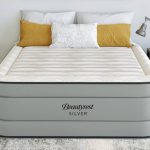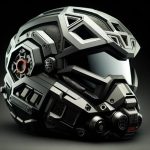As the winter season approaches, snowmobilers are gearing up to hit the trails and experience the thrill of riding through snowy landscapes. However, before you embark on your adventure, there’s one crucial aspect that requires your attention: what to wear under your snowmobile helmet.
While it may seem like a minor detail, choosing the right gear to wear under your helmet can greatly impact your comfort and safety while riding.
So, what do you wear under a snowmobile helmet?
When choosing what to wear under a snowmobile helmet, you can consider things like moisture-wicking materials, such as fleece, wool, polyester, or a synthetic-blend. Some recommend wearing a base layer made of polyester or synthetic material, such as a long underwear top and bottom or an onsie.
Now that we’ve covered the basics, let’s delve into more specific options for what to wear under a snowmobile helmet.
Understanding the Importance of Proper Attire for Snowmobiling
Contents
When it comes to snowmobiling, wearing the appropriate attire is crucial for both safety and enjoyment. This includes a snowmobile suit and boots, gloves, and socks. However, one aspect that is often overlooked is what to wear under a snowmobile helmet.
While it may seem like a small detail, it is actually quite important for several reasons.
| 1. | Protection and Comfort | Wearing something under the helmet provides both protection and comfort. A balaclava face mask or beanie can add an extra layer of insulation to keep your head warm in cold temperatures. It can also prevent any chafing or discomfort from the helmet itself. |
| 2. | Eye Protection | Goggles, sunglasses, or visors are necessary for shielding your eyes against harsh winds and flying debris while snowmobiling. These should be worn under the helmet for optimal protection. |
| 3. | Frostbite Prevention | On extremely cold days, wearing a face mask under the helmet is crucial for preventing frostbite on your face. This is especially important if your helmet is not fully-faced. |
| 4. | Added Insulation | Gears such as communicators and intercom systems can also provide warmth and insulation when worn under the helmet. This can make a significant difference, especially in extreme weather conditions. |
| 5. | Safety First | A good snowmobile helmet is essential for a safe ride. By wearing additional gear under the helmet, you are taking an extra step towards ensuring your safety on the trails. |
In conclusion, it is imperative to wear appropriate attire while snowmobiling, particularly under a snowmobile helmet. This is important for various reasons, such as protection, comfort, and safety.
Accessories like balaclavas, beanies, goggles, and intercom systems can greatly enhance your overall snowmobiling experience.
Klim snowmobile gear offers high-quality options for both safety and fashion, making it a popular choice among snowmobilers. Remember to dress in layers and avoid cotton materials for optimal warmth and moisture-wicking capabilities.
Key Factors to Consider when Choosing Snowmobiling Clothing
When it comes to selecting the perfect attire to wear under a snowmobile helmet, there are numerous key factors to consider. These include insulation, waterproofing, wind protection, mobility, flexibility, visibility, and style. Each of these elements plays a crucial role in ensuring maximum comfort, safety, and enjoyment while snowmobiling.
- Insulation is vital for staying warm in frigid temperatures. It is essential to find clothing with high-quality insulation that will trap your body heat and prevent it from escaping. You can achieve this through layering or by using insulated clothing such as thermal base layers or fleece jackets.
- Waterproofing is another critical aspect to consider when choosing snowmobiling clothing. As snowmobiling involves being exposed to snow and ice for extended periods, it is crucial to have gear that will keep you dry. Look for waterproof materials such as Gore-Tex or other top-notch fabrics.
- Wind protection is also crucial when selecting snowmobiling clothing. Riding at high speeds creates a wind chill effect that can quickly make you feel cold and uncomfortable. Look for gear that offers windproof protection to keep you warm and comfortable during your ride.
- In addition, mobility and flexibility are essential for safe riding. Snowmobiling requires quick reflexes and swift movements, so it is crucial to choose clothing that allows for easy movement without restricting your range of motion.
Visibility is another vital factor to consider when choosing snowmobiling clothing. Brightly-colored or reflective gear can help make you more visible to other riders and vehicles, reducing the risk of accidents.
Lastly, while style may not seem like a critical factor, it can significantly impact your overall snowmobiling experience. Opt for gear that not only meets your functional needs but also reflects your personal style and makes you feel confident while riding.
Essential Snowmobiling Gear You Shouldn’t Forget
When preparing for a snowmobiling adventure, it is crucial to pack essential items that will ensure your safety and comfort throughout your trip. These items include a personal pouch with important documents and supplies, a charged cell phone, GPS and strobe light for emergencies, a first aid kit, and the option for a guided tour or personal adventure at Silver Spur Outfitters and Lodge.
Let’s take a closer look at each item and why it is vital to have them with you:
- Personal pouch: A personal pouch is an absolute must-have while snowmobiling. It should contain important documents such as your driver’s license, some cash, any necessary medications, and high-energy foods like protein bars or trail mix. In case of an emergency or getting lost, having these items on hand can be extremely valuable.
- Charged cell phone: It is essential to have a charged cell phone with you while snowmobiling in case of any unforeseen circumstances. However, make sure to keep it in a waterproof case or bag to protect it from the elements.
- GPS and strobe light: While you may have a good sense of direction, it is always wise to have a GPS device with you in case you get lost. Additionally, a strobe light can help emergency responders locate you if needed.
- First aid kit: Accidents can happen while snowmobiling, so it is important to have a well-stocked first aid kit on hand. Make sure it includes bandages, gauze, adhesive tape, antibiotic ointment, and a thermal blanket.
- Guided tour or personal adventure: Whether you are a beginner or an experienced rider, having the option for a guided tour or personal adventure at Silver Spur Outfitters and Lodge is highly beneficial. Their experienced guides can provide valuable tips and ensure your safety while exploring the beautiful backcountry of Idaho.
Layering Techniques for Optimal Comfort and Safety on the Snowmobile
Layering is an essential aspect of snowmobiling, as it not only keeps you warm and comfortable but also ensures your safety. Proper layering can prevent hypothermia or frostbite, which can be life-threatening in the harsh and remote environment of snowmobiling. Here are some highly recommended layering techniques to ensure optimal comfort and safety on the snowmobile:
- Base layers: Begin with a base layer made of moisture-wicking materials like merino wool or synthetic fabrics. These materials will keep you dry by pulling sweat away from your skin.
- Mid layers: Add a mid-layer consisting of insulating materials such as fleece or down. This layer will help trap heat and keep you warm during your ride.
- Outer layers: The outer layers should be waterproof and windproof to protect you from the elements. A snowmobile suit with these properties is ideal for snowmobiling.
- Headwear: Wear a balaclava or neck gaiter to protect your face from the cold wind and snow. Additionally, a helmet with a visor or goggles is crucial for eye protection.
- Hand and foot protection: Don’t forget to protect your hands and feet while riding. Insulated gloves or mittens are essential for keeping your hands warm, and make sure they are also waterproof. For your feet, wear thick socks and waterproof boots that will fit comfortably inside your snowmobile boots.
- Additional safety gear: Apart from proper layering, there are other important safety gear items that you must not forget to bring along, such as a DOT-approved helmet, goggles or face shield, and insulated boots.

Conclusion
In conclusion, choosing the appropriate under-helmet clothing is essential for a secure and enjoyable snowmobile experience.
When deciding what to wear beneath a snowmobile helmet, it’s crucial to take comfort, safety, and layering with moisture-wicking textiles into account. For a more comfortable ride, don’t forget to add additional insulation, avoid frostbite, and wear eye protection.
It’s also critical to comprehend the important considerations while choosing snowmobile apparel, including mobility, visibility, wind protection, insulation, waterproofing, and style. Consider taking a guided tour or going on a personal adventure at Silver Spur Outfitters and Lodge. Don’t forget to bring necessary goods like a first aid kit, a charged mobile phone, a GPS, and strobe light for emergencies.
Lastly, for the best possible comfort and safety while riding a snowmobile, learning layering tactics is crucial.






